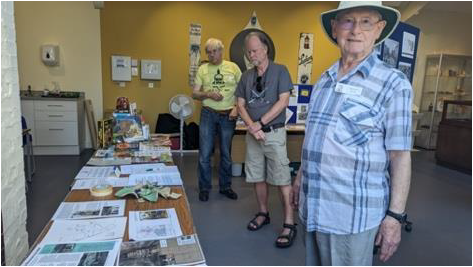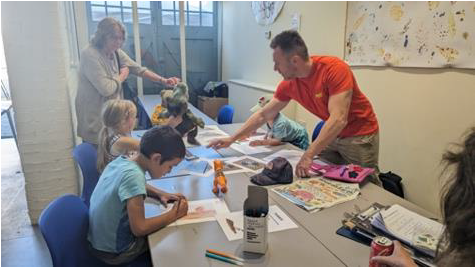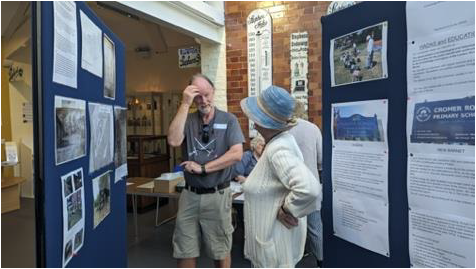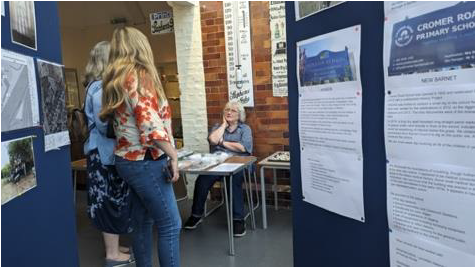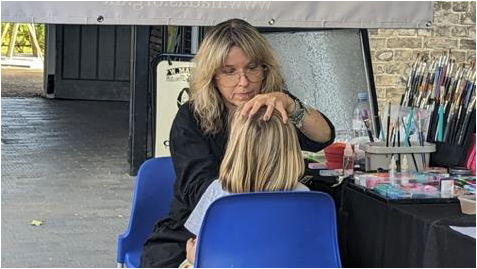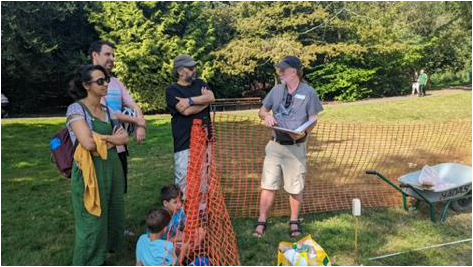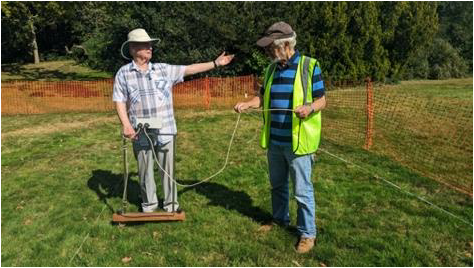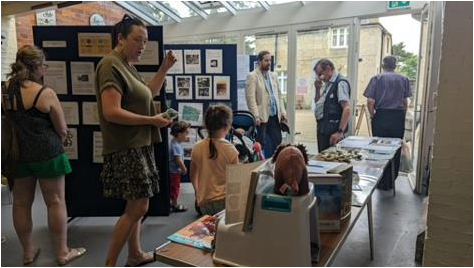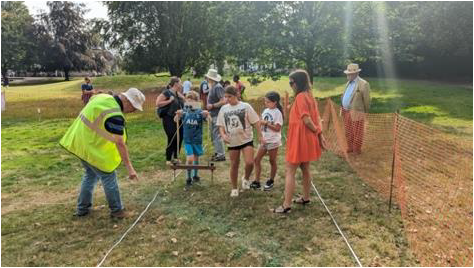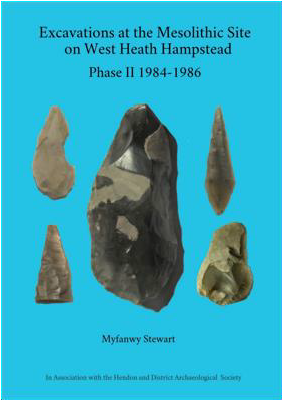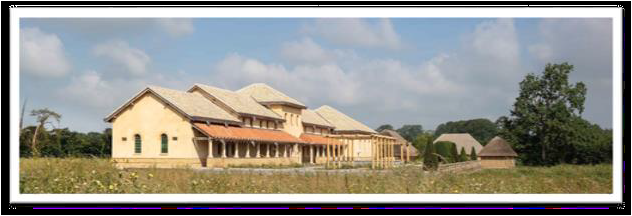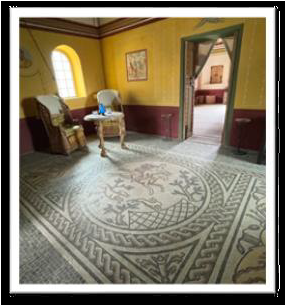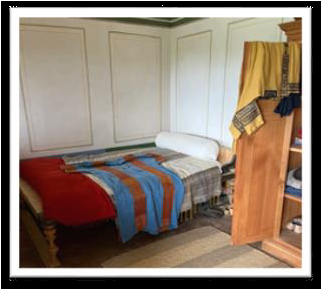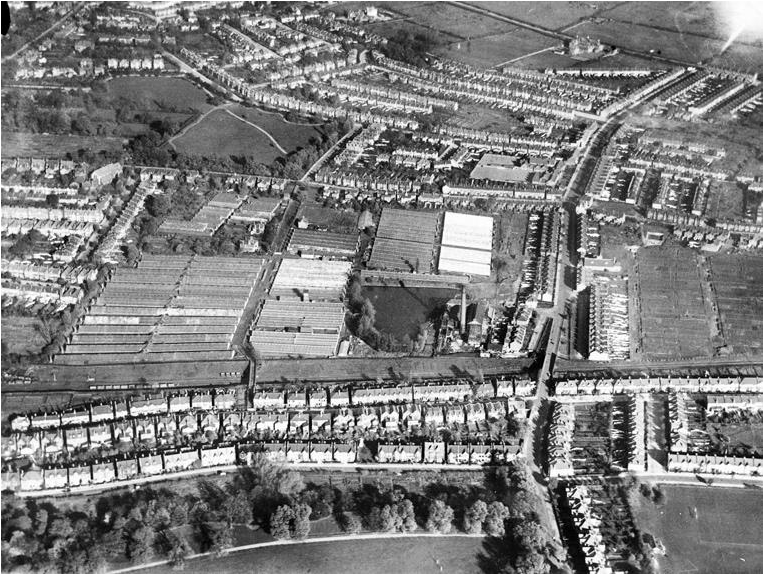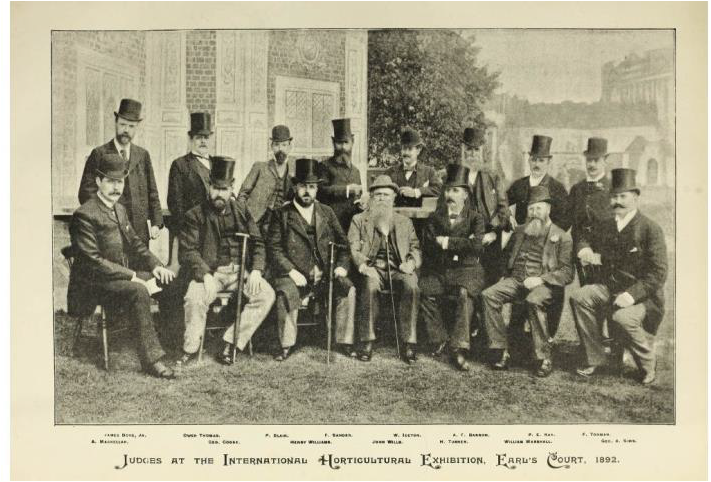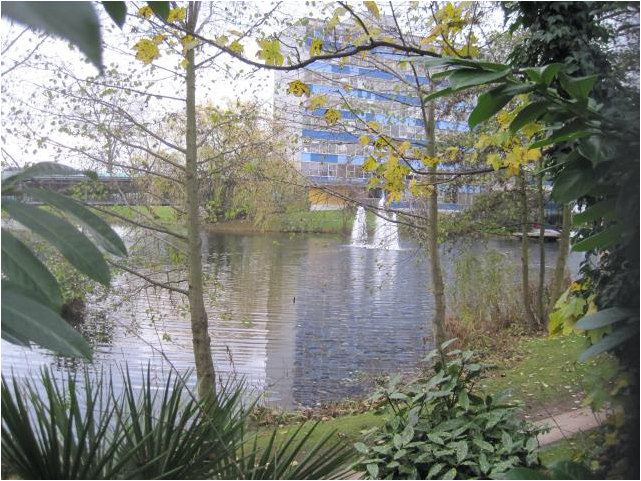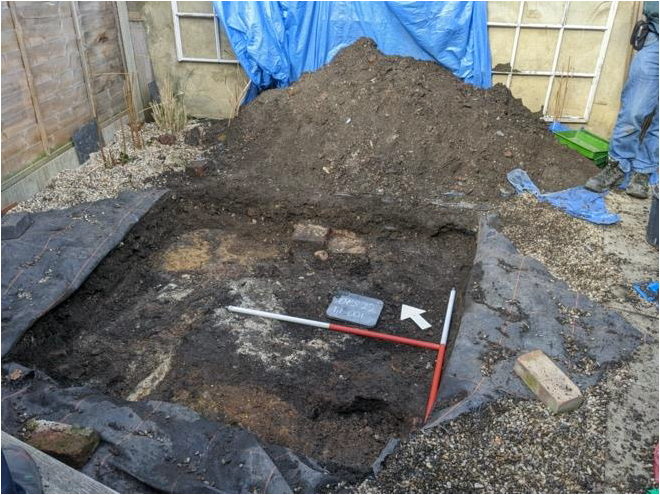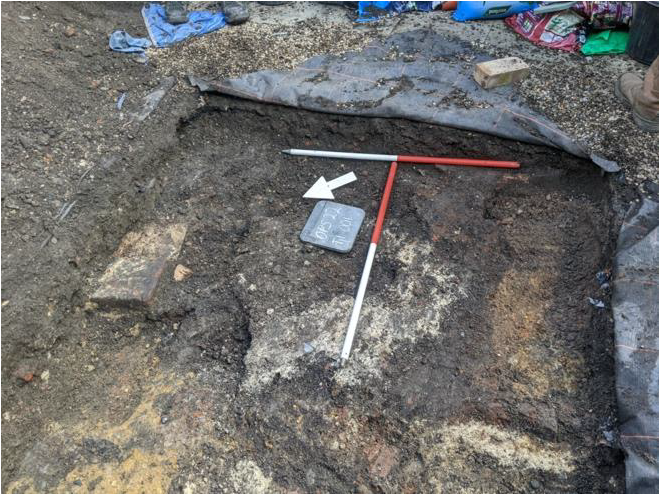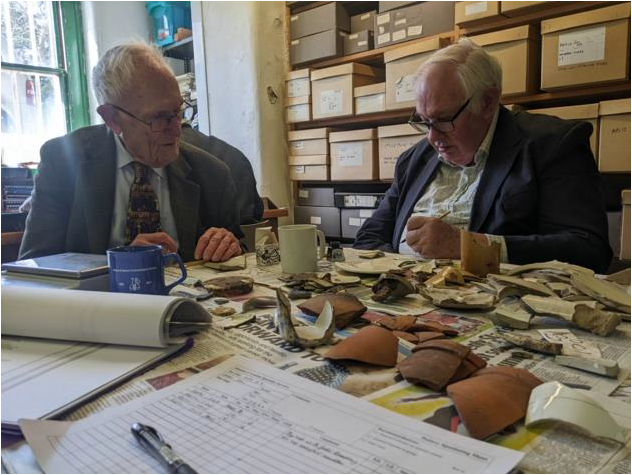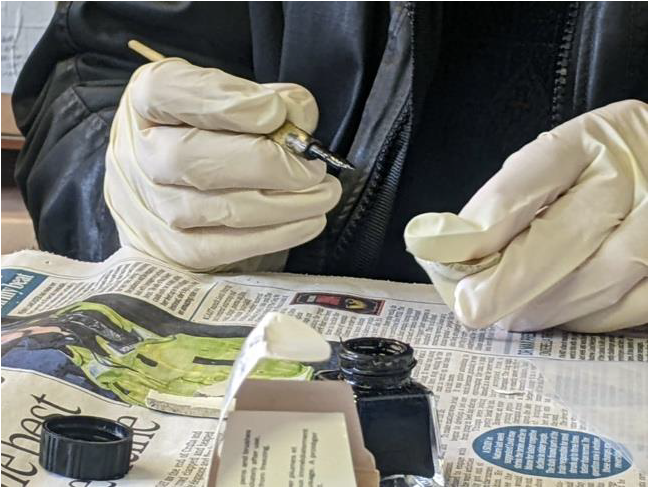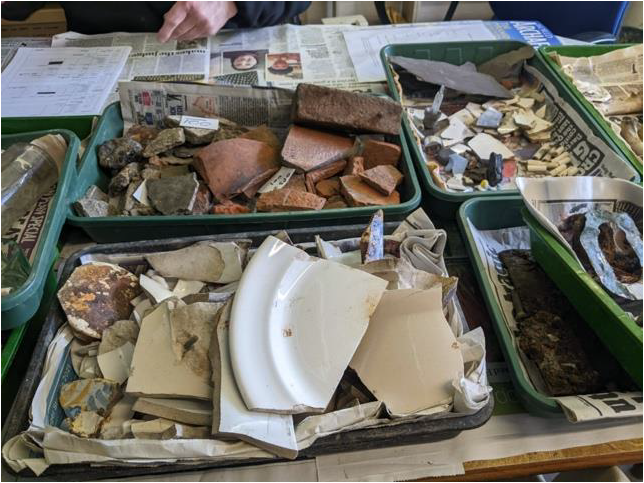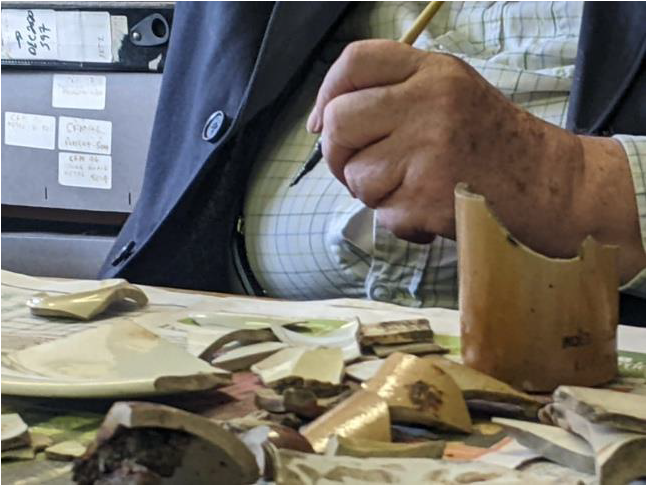
No. 641 August 2024 Edited by Melvyn Dresner
HADAS DIARY – Forthcoming Lectures and Events
Lectures are normally face-to-face, though lectures in winter may be on Zoom. Lectures are held in the Drawing Room, Avenue House, 17 East End Road, Finchley N3 3QE, 7.45 for 8pm. Buses 13, 125, 143, 326 and 460 pass close by, and it is a five to ten-minute walk from Finchley Central Station on the Barnet Branch of the Northern Line. Bus 382 also passes close to Finchley Central Station. We also on the new SuperLoop Bus, SL1. Tea/Coffee/biscuits are available for purchase after the talk.
Sunday 1st September, 11.30-16.30 Heritage Sunday Day at Avenue House, with HADAS stall, face painting and colleagues from other societies, photos from last year:
1
Tuesday 10th September (please note change of talk) West Heath II book launch
As members will be aware the latest book published by HADAS in April 2024 was the phase II 1984 – 1986 part of the dig, an important Mesolithic site found on Hampstead Heath and excavated by this society. This talk will explain how the new book evolved, how it was assembled, designed and published. Unfortunately Myfanwy Stewart the author cannot attend so members of the ‘Fieldwork Team’ will speak on various elements including how the flints were treated to museum standards with some these on display. The book is offered free to members who will be able to collect it from the talk.
Tuesday 8th October 2024 Beacon of the Past, Hillforts Project
Dr Wendy Morrison, Manager, Chilterns Heritage & Archaeology Partnership (CHAP) This talk has been moved from September due to unforeseen circumstances.
The Newt Peter Pickering
The Newt is a privately-owned estate near Castle Cary in Somerset. Bought by a billionaire in 2013 It has been open to the public since 2019. There are impressive gardens, a boutique hotel, a farm shop, a herd of deer and a sanctuary for red squirrels. Well worth a visit.
“Yes,” HADAS members will say, “but we’re an archaeological society; why advertise this to us?” Because the estate, when acquired, included some remains of a Roman villa (known as the Hadspen villa), discovered and partially dug in the early nineteenth century. Since its acquisition it has been fully excavated and a modern museum built on part of it (the bath suite is visible under the glass floor). That would itself justify the visit, but a quarter of a mile away a replica villa has been constructed, a “reasonable evocation of its ancient predecessor” called ‘Villa Ventorum’ (villa of the winds). All this was what a group from the Roman Society (including several HADAS members) went to see on 27th April (a regrettably cold but thankfully dry day). We had an introductory talk from the resident archaeologist (the work has been undertaken by Oxford Archaeology and Wessex Archaeology), and then explored independently.
Photograph used with permission from Newt | The Newt in Somerset
The professionalism of the whole enterprise was very impressive; there has been no skimping of expense – and no public funding, and the minimum necessary adaptations to meet twenty-first century planning rules, building regulations, and accessibility requirements. There are several ventures like this in continental Europe (I remember particularly Carnuntum in Austria), but there are few in Britain, where reconstruction tends to be frowned upon as Disneyfication (parsimony may be relevant, too).
Real buildings evolve over time, but a replica has to be anchored to a particular epoch. The date chosen for the Villa Ventorum was A D 351, during the reign of Magnentius “a time when optimism was still possible but fears for the future were growing stronger”. The plan of the reconstruction was based on that of the excavated original, with the same orientation; where evidence from the original was lacking, as it often was,
2
it often was, parallels were taken from other excavations in Britain and elsewhere, from illustrations in ancient mosaics and wall paintings, and from the Roman architectural writer, Vitruvius. Similarly, the design of the villa’s garden, the paintings on its walls, and the woodwork, soft furnishings and board games inside, were all based on evidence from throughout the empire. The verisimilitude extended to the toilets, and in the courtyard there was a bar where food and drink as authentic as possible was obtainable, and there a demonstration of the making of pottery. One room in the villa had a number of virtual reality headsets, where at the risk of disorientation life in the villa, including rats, was evoked. The images below show two rooms in the re-created villa and are used with permission from another attendee, the fiction author Jacquie Rogers.
Claigmar Vineyard in Finchley: Commercial Grape Growing in the Nineteenth and Early Twentieth Centuries. Part 3 (1) Dudley Miles
Kay died of heart failure at the age of 56 on 22 August 1909. The value of his estate was only £40, perhaps because he passed his property to his widow before he died. His obituary in the Hendon & Finchley Times states that he had a weak heart, and had had to live a quiet life for several months, but his death was unexpected. The Barnet Press, on the other hand wrote that he had been far from well for a long time, and his death was not unexpected. (2) The Gardeners’ Chronicle in its obituary regretted the death of ‘a well-known and highly esteemed nurseryman’. It went on
‘Mr Kay long ago achieved a wide reputation as a successful cultivator of grapes for market, his produce being among the finest ever sent to Covent Garden. He was one of the first to take up the cultivation of the Canon Hall variety of Muscat, to the growing of which he devoted special attention. In addition to grapes he grew tomatoes and cucumbers on a large scale for market, and his keen insight into what is required by the public was shown in his selecting the Comet variety of tomato for his stock’. (3)
His funeral was attended by long-serving staff who had been with him for between twelve and thirty years, led by the general manager, Thomas Allen, and more than sixty employees followed his coffin to his grave in St Marylebone Cemetery in East Finchley. (4) He left a wife and four children, and the 1911 census shows that his widow Jane Kay had no occupation, Peter Crichton Kay, 1889-1954, was a bank
____________________________________
(1) This article was first published in the February 2024 issue of The Local Historian. It was a shortened version due to the journal’s size limitations. The full article will be printed in the HADAS newsletter in instalments over the next few months. I should like to thank Hugh Petrie, Barnet Council Heritage Development Officer, for his assistance.
(2) England and Wales Probate Calendars, 1858-1995, Will and Probate Grant, Peter E Kay; Hendon & Finchley Times, 27 August 1909, p. 6; The Barnet Press, 26 August 1909, p. 5
(3) The Gardener’s Chronicle, 28 August 1909, p. 160
(4) Ibid
3
clerk, Walter Glassford Kay, 1892-1988, was an articled clerk to a chartered accountant, while Joan Margaret Kay, born 1890, and Elizabeth Dorothy Kay, born 1895, were students. (5)
By the 1910s, the profitability of the business had declined, but it continued to trade, run by his old friends and associates. (6) The entry for the company in the Stock Exchange Year-Book of 1921 stated that it had paid dividends on preference shares up to 1911, so it must have stopped paying on ordinary shares, but it always paid the interest due on its £42,500 mortgage debentures, and they were paid off by 1924. (7) The Ordnance Survey map of 1920 shows Claigmar Vineyard occupying the same area as in 1911, and this is supported by an aerial photograph in 1921. (8)
In 1920s, P. E. Kay Ltd gradually sold its land, mainly for house building, perhaps partly to finance repayment of the debentures. (9) On 2 November 1920, the company auctioned:
’67 greenhouses, each 170ft by 26ft, having a total length of 11,500ft, and containing 342,000 superficial feet of glass (24 by 18 and 24 by 16 size, and 21oz.), 51,000ft of 4in. hot water piping, 32 boilers, brick walls containing 300,000 bricks, erection of large brick tank house, 15,000-gallon tank, two engines and pumps, 12,000ft. of 1½, 3 and 6 inch cold water pipes, 200 standards and taps, and 31 feed cisterns.’
The auctioneers claimed that it was ‘the largest auction sale of greenhouses and piping ever held’. (10) Both of Peter Edmund’s sons became directors at around this time.(11) A sale of greenhouses and buildings in 1922 was withdrawn as they had been acquired by Thomas Allen, the general manager who had led the staff at Kay’s funeral. He was a director of the company for a short period in the early 1920s, and he now took over part of the nursery on his own account. (12) Another sale took place shortly afterwards. (13)
Two areas were sold to Finchley Urban District Council. In the early 1920s the company rented ten acres between Squires Lane and Long Lane Pasture to the Pointalls and District Allotment Society Limited. In 1924 the site was offered to the Council, which took it up as suitable compensation for land it was losing to Middlesex County Council for construction of the North Circular Road. In 1925 Middlesex County Council purchased the land, to be jointly controlled by the two councils. It has been used as allotments ever since, and was known until the 1960s as Kay’s Field or Kay’s Land. (14) In 1923 the Council purchased the reservoir and adjoining land, and the site was used for the electricity, fire brigade and highways
___________________________________
(5) Jane Kay, Claigmar, 1911 Census
(6) Rees James’s status may have declined in this period. In the 1901 census he gave his profession as an accountant working for a bank; in 1911 he was a counting house clerk in a drapery warehouse.
(7) Stock Exchange Year-Book, entries for P. E. Kay Limited
(8) Ordnance Survey, 26 inches to a mile, Mid Finchley 1911 and 1920. See copies below of the 1920 map and the aerial photograph.
(9) The company paid £1,000 a year into a sinking fund to pay off the debentures, but this would not have raised an adequate sum (Financial Times, 29 January 1904, p. 8).
(10) Hendon & Finchley Times, 15 October 1920, p. 2. “Superficial feet” is presumably an error for superficial square feet, the area of the roof. On average, it was one fifth higher than the ground covered (Bear, ‘Fruit Growing under Glass’, p. 269).
(11) Stock Exchange Year-book, 1921, entry for P. E. Kay Limited
(12) Hendon & Finchley Times, 17 November 1922, p. 2; Stock Exchange Year-book, 1921-1923, entries for P. E. Kay Limited
(13) Daily Telegraph, 9 December 1922, p. 15
(14) Housing and Town Planning Committee’s Report, 3 March 1924, p. 910, in BH, FUDC, 1923-1924, p. 1856; Housing and Town Planning Committee’s Report, 2 February 1925, in ibid, 1924-1925, p. 1386; Council Minutes, c. April 1925, p. 933, in ibid, p. 1852; General Purposes Committee, c. July 1925, p. 389, in ibid, 1925-1926, p. 802; Allotments and Food Production Committee’s Report, 28 November 1963, p. 607, in BH, Finchley Borough Minutes (FBM) 1963-1964, p. 717; Bartholomew’s Reference Atlas of Greater London, 13th ed., Edinburgh, 1968, p. 33. The Pointalls and District Allotment Society Limited was registered as an Industrial and Provident Society in 1921.
4
departments. The area is now the gated premises of Pentland Brands Limited between Squires Lane and Strathmore Gardens, and the reservoir is now Lakeside Nature Reserve. (15)
Further sales of greenhouses and equipment took place in 1925 and 1926. (16)The company’s acquisition of a telephone number in the mid-1920s shows that it was still then trading, and it was last listed in directories in 1929. What was probably the final sale was held in the same year. (17) P. E. Kay Limited is not recorded thereafter until 8 September 1949, when it went into members’ voluntary winding-up, a procedure to close down a solvent company. Peter Crichton Kay was chairman and Walter Glassford Kay, who was a Chartered Accountant, was appointed liquidator. The report of the liquidator to the members was presented at a meeting on 6 March 1952. (18)
Kay’s other nursery business, Mill Hill Vineyard, Limited, was incorporated on 14 December 1903 with Claigmar as the Registered Office. The directors were Kay, Rees James and Alex James Monro, who was the secretary of P. E. Kay Limited and probably a relative of Kay’s wholesaler George Monro. (19)
Debentures were issued to Kay for £5,000, part of a series to secure £10,000, secured on land at Mill Hill which was the property of the company, and formerly part of the Dollis Brook Farm Estate. (20) Little is known of the company, but its activities must have included flower production as in 1911 the National Chrysanthemum Society awarded a first class certificate to Kay’s sister for the vineyard’s new variety of the flower. (21) The vineyard was listed in Kelly’s Directories between 1910 and 1934, and was located on Holders Hill Road, north of Hendon Cemetery, on land which is now the east end of Devonshire Road. The land was developed for housing in the mid and late 1930s. (22) The company was wound up by members’ voluntary liquidation in 1940, with Walter Glassford Kay as both chairman and liquidator. (23)
Jane Kay outlived her husband by almost forty years. Her will, dated 1927, bequeaths her leasehold house and nursery known as Claigmar to Peter Crichton Kay, subject to him paying off any mortgage on the house and nursery charged at the date of her death. She may have sold or given it to him and leased it back. The nursery mentioned in the will probably consisted of older greenhouses which had been Peter Kay’s personal property. She was still listed in directories at Claigmar in 1939, but later moved to Harpenden and died in a Tunbridge Wells nursing home on 28 December 1948. The gross value of her estate was £5,332 12s 4d. (24)
______________________________
(15) Council Minutes, c. December 1923, p. 685, in BH, FUDC, 1923-1924, p. 1378; Electricity Committee’s Report, 11 February 1925, p. 795, in BH, FUDC, 1924-1925, p. 1505; Finance Committee’s Report, 12 September 1934, p. 591, in BH, FBM 1933-1934, p. 632; Janet Hewlett et al. (1997), Nature Conservation in Barnet. London Ecology Unit. p. 94. The lake can be seen from a track behind Strathmore Gardens.
(16) Gardeners’ Chronicle, 31 October 1925, p. ii; Hendon & Finchley Times, 22 October 1926, p. 12
(17) Stock Exchange Year-Book, 1926 and 1927, entries for P. E. Kay Limited; Kelly’s Directory of Finchley and Friern Barnet, 1929, p. 107; Hendon & Finchley Times, 29 November 1929, p. 12
(18) The London Gazette, 16 September 1949, p. 4449; ibid, 29 January 1952, p. 598
(19) Gardeners’ Chronicle, 2 January 1904, p. 15; Financial Times, 21 December 1903, p. 4. The company is sometimes shown as Mill Hill Vineyards Limited. A. J. Monro was the manager of the Nurserymen’s, Market Gardeners’ and General Hailstorm Insurance Company Limited (Bear, ‘Fruit Growing under Glass’, pp. 268-269).
(20) Financial Times, 2 February 1904, p. 7
(21) Gardening Illustrated, 23 December 1911, pp. 747-748 (Gardening Illustrated for Town & Country – Google Books)
(22) Post Office Directory of the Six Home Counties, Part 1, Kelly & Co, 1910, Middlesex section, p. 224; Ibid, 1912, p. 238; Ibid, 1926, p. 218; Ibid, 1933, p. 198; Kelly’s Directory of Hendon, Golders Green, Mill Hill etc, 1934, p. 146. Holders Hill Road was called Dollis until around 1921. The site is last mentioned in a successful application for a six-month extension from September 1934 for the use of a temporary building, near the entrance to Mill Hill Vineyard, as a shop (Buildings and Town Planning Committee, Hendon Borough Council, 15 October 1934, in BH, Hendon BC, vol. 52, p. 470).
(23) The London Gazette, 7 April 1939, p. 2364; ibid, 5 December 1939, p. 8126
(24) Kelly’s Directory of Finchley and Friern Barnet, 1939, p. 302; Will of Jane Campbell Kay dated 19 August 1927 and probate grant 28 December 1948. In 1905, greenhouses owned by Peter Kay were rated at £246 and those owned by P. E. Kay Limited at £2094 (Hendon & Finchley Times, 8 September 1905, p. 5). In 1927 Jane Kay unsuccessfully asked for a reduction in the rates on the greenhouses (Finance Committee’s Report, 11 May 1927, pp. 98-99, in BH, FUDC, 1927-1928, pp. 228-29).
5
Claigmar Vineyard is little known today, but it has its memorials. Local roads are called Claigmar Gardens, Vines Avenue, Vineyard Grove and Nursery Avenue after it, and the newsletter of the Finchley Horticultural Society is named Grapevine after the vineyard. (25)
Peter Crichton Kay and cut flower production
Directories for 1910 and 1912 listed an additional business in Oakfield Road as Peter Crichton Kay, fruit grower, (26) which he must have been running part time as he was then a bank clerk. He served with the Middlesex Regiment in the First World War between 1914 and 1919. He rose to the rank of Lieutenant-Colonel and was awarded the D.S.O. and M.C. (27) In 1921 he was living with his mother, who is shown as head of the household on the census form, his sister Elizabeth and a servant at Claigmar. He is listed as an employer of a business in the same road, with an illegible occupation, perhaps ‘market gardener’ changed to ‘fruit grower – tomatoes’. (28) In the same year he married Marjorie Goodyear. (29)
Peter Crichton Kay became an authority on the production of cut flowers in vast quantities for market. He was managing director of W. E. Wallace and Son Limited and Lowe & Shawyer Limited, which was described in an obituary of George Shawyer as ‘without doubt, the largest cut flower producing concern in the world’. (30) Kay was president of the British Flower Industry Association and a member of the National Farmers Union Council. He was awarded his own Victoria Medal of Honour in 1951. He died in 1954 and Kay Cliffs Nature Reserve at East Runton was donated to the Norfolk Wildlife Trust in his memory. (31)
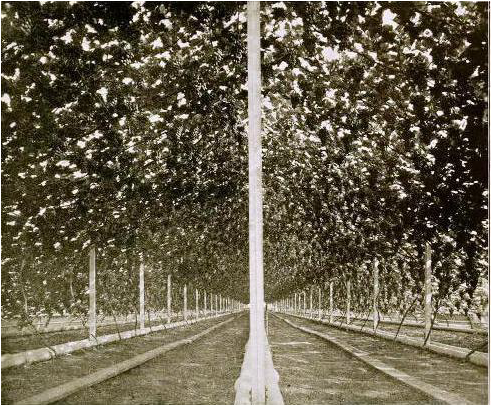
________________________________________
(25) The FHS Grapevine, Finchley Horticultural Society, Spring 2011 (FHS-Grapevine-Spring-2011.pdf (finchleyhs.org))
(26) Post Office Directory of the Six Home Counties, Kelly & Co, Part 1, 1910, p. 153; Ibid, p. 1912, p. 163
(27) Debrett’s Peerage, Baronetage, Knightage, and Companionage, 1931, p. 1782. See also Local Lynx, issue 104, October & November 2015, WWI supplement, p. i (Local Lynx No.104 October/November 2015 by Robert Metcalfe – Issuu)
(28) Jane Kay, Claigmar, 1921 census
(29) Debrett’s Peerage, p. 1782
(30) The Directory of Directors, entries for Peter Crichton Kay in volumes between 1927 and 1954; Florists Exchange and Horticultural Trade World, vol. 101, 1943, p. 11; The Times, 15 October 1954, p. 11
(31) Ray Desmond (1994). Dictionary of British and Irish Botanists and Horticulturists Including Plant Collectors, Flower Painters and Garden Designers, CRC Press. p. 393; N.F.U. Yearbook, 1955, p. 95; Kay Cliffs Nature Reserve, Norfolk Wildlife Trust. (Home | Norfolk Wildlife Trust) See also obituary, Middlesex Advertiser and County Gazette, 22 October 1954, p. 3
6
APPENDIX 1
Directors of P. E. Kay Limited and Mill Hill Vineyard Limited.
The Companies House records of both companies were destroyed when the companies were dissolved, and no information on directorships of P. E. Kay Limited is available between 1889 and 1904. The years below are when directorships are listed, and in some cases may be based on information for the previous year. (32)
| Name | P. E. Kay Limited | Mill Hill Vineyard Limited |
| Peter Edmund Kay | 1889-1906 | 1903- |
| Margaret Kay | 1889- | |
| Jane Campbell Kay | 1889- | |
| Rees James | 1904*–1927* | 1903- |
| Alex James Monro | 1903- | |
| Richard Cobley | 1904*-1919 | |
| George Monro | 1907-1927* | |
| Charles Cole | 1908-1920 | |
| Thomas Allen | 1921-1923 | |
| Peter Crichton Kay† | From 1921 | 1921-1938 |
| Walter Glassford Kay† | From 1921 | Probably from 1921 |
* Rees James and Richard Cobley were first recorded as directors of P. E. Kay Limited in 1904 and almost certainly acted from an earlier date. The end date for Rees James’s and George Monro’s directorships is the last year that the company is listed in the Stock Exchange Year-Book, not necessarily when they ceased to act.
† Information on P. C. and W. G. Kay’s directorships is limited, but they were both recorded in the Stock Exchange Year-Book as directors of P. E. Kay Limited from 1921. P. C. Kay is listed in the Directory of Directors from 1921, and he is recorded as a director of Mill Hill Vineyard Limited between 1921 and 1938.
_________________________________
(32) Stock Exchange Year-Book, listings for P. E Kay Limited between 1904 and 1927; Directory of Directors, listings for P. C. Kay from 1921 and W. G. Kay between 1928 and 1930; Financial Times, 19 March 1889, p. 4; Gardeners’ Chronicle, 2 January 1904, p. 15
7
APPENDIX 2
P. E. Kay Limited in the Stock Exchange Year-Book (33)
The company was listed in the Stock Exchange Year-Book between 1904 and 1927. Throughout the period it had an issued capital of £10,000 in £10 ordinary shares and £20,000 in 6% cumulative preference shares of £100, which had priority over capital as well as dividends. The entry for 1921 records that dividends on preference shares had been paid up to 31 March 1911, the 1922 entry to 31 March 1912, the 1923 entry to 31 March 1913, and in 1926 to 31 March 1914. Shares of both classes had equal voting rights and directors had to have £50 in either class of share. The company had to have between three and seven directors.
There were 425 £100 5% mortgage debentures (4% until 24 June 1903) and interest was always fully paid. They were redeemable on 1 January 1923. The 1922 entry shows the debentures reduced to £8,500 and the 1924 entry to zero.
The only entry to show accounting information is that for 1926, which gives very brief details of accounts for the year to 31 March 1925. The company then had a bank loan of £3,275 and a general reserve of £2,347.
________________________________
(33) Stock Exchange Year-Book, listings for P. E Kay Limited between 1904 and 1927; prospectus for the sale of shares and debentures, Financial Times, 29 January 1904, p. 8. The prospectus gives details of the dates and purposes of share and debenture issues.
8
OPS22 Hopscotch Pottery Report Melvyn Dresner
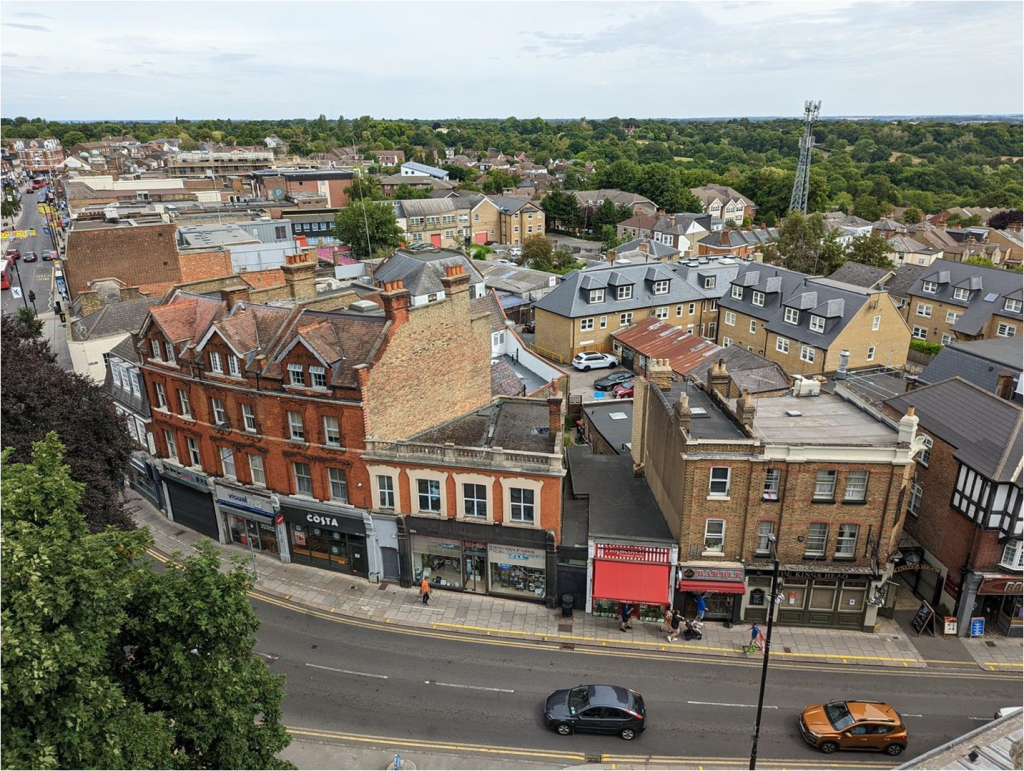
Overview
This site produced pottery from the 14th century into 20th century. We can define four contexts by pottery finds. Context 001 dating to 18th and 19th century, with material into the late 20th century. Context 002 is late 16th century into 18th century, based on clay pipes could be 1660 to 1670. Context 003 dates to 14th or 16th century. The earliest date is 1340 to 1350 and could extend into later into the 16th century. Context 005 has a very small assemblage of three sherds, may not call it an assemblage, however, the overlap date of the three pottery types is 1340 to 1350, similar to context 003.
Context 001 is just below topsoil, so most likely context to have been disturbed in recent times. Pottery found here is 18th and 19th century, fabrics including post medieval redware (PMR), refined white earthenware (REFW), London tin glaze ware with pale blue glaze and dark decoration (TGW H), English brown salted-glazed stoneware (ENGS), black basalt ware (BBAS) refined whiteware under glazed transfer printed (TPW), and yellow ware with slip decoration (YELL SLIP).
Most forms are identifiable, though some finds are defined as miscellaneous. The refined white ware includes a range of forms though mugs and cups predominate with plates and bowls, and one lid and frags of an egg cup. Decorated banding is the most common decoration, one with gold banding. The post medieval redware is mainly flower pot, with a bowl frag as well. The English stoneware include two bottles, and one flagon. One bottle labelled, “Holgate and Co, London”, and flagon, we can see part of the name, “Barnet”. The yellow ware includes slipware decorated in Mocha style. The transfer printed ware sherds are either bowls, dishes or mugs. Decoration includes a woman with a guitar (on a bowl), pagoda plus stamp of crown (miscellaneous) and a dish with floral/ foliage pattern, and mug with floral
9
decoration. We cannot identify the form of the London tin glaze ware recovered. The entire assemblage is domestic in nature, mainly related to dining and drinking, and gardening.
Photos of Context 1:
Cleaning and recording bulk finds:
To be continued…..
OTHER SOCIETIES’ EVENTS Eric Morgan
Not all societies or organisations have returned to pre-COVID conditions, please check with them before planning to attend.
10
Thursday 8th August, 7pm. Avenue (Stephens’) House, 17 East End Road, Finchley, London, N3 3QE. Guided Tour of the main house and its gardens including the Bothy Garden. Tickets £13.50 including glass of wine. For booking, please visit www.stephenshouseandgardens.com
Also Tuesday – Thursday throughout August, 10 am. – 3 pm. Stephens’ Collection. Find out more about the history of the Estate and Charles ‘Inky’ Stephens.
Tuesday 13th August, 7.45 pm. Amateur Geological Society, Finchley Baptist Church Hall, 6, East End Road, Corner Stanhope Avenue, London N3 3LX. (Almost opposite Avenue House). Members Evening. Talks by members of the society with a theme of Fossils in Flint. For further details please visit www.amgeosoc.wordpress.com
Monday 9th September, 3 pm. Barnet Museum and Local History Society, St John the Baptist Church, Chipping Barnet, Corner High Street/Wood Street, Barnet, EN5 4BW. Another Walk in the Park – More of London’s Green Treasures. Talk by John Lynch. Please visit www.barnetmuseum.com
Friday 13th September, 7.30 pm. Enfield Archaeological Society, Jubilee Hall, 2, Parsonage Lane/Junction Chase Side, Enfield, EN2 0AJ. Whitechapel Excavations. Talk by Dougie Killock. Please visit www.enfarchsoc.org for further details. Non-members £1.50. Refreshments available form 7 pm.
Saturday 14th – Sunday 22nd September. Open House London. Free entry to London’s best buildings not normally always open to the public. For full details please visit www.openhouse.org.uk or https://open-city.org.uk including Saturday 14th and Saturday 21st September, 10 am. – 4 pm. St. Pancras Waterpoint, St Pancras Cruising Club, St. Pancras Yacht Basin, Camley Street, London, N1C 4PN. Telephone number 0844 502 2805. Historic Victorian Water Tower, close to St. Pancras lock on the Regents Canal. Guided Tours every hour. Must be pre-booked on www.st.pancrascc.co.ukand click on Waterpoint. Also open on Saturday 17th August, 10 am. – 4 pm.
Thursday 19th September, 5 pm. Enfield Society, address as for Friday 13th September, E.A.S. The New Blue Plaques of Enfield. Talk by Simon Warren. Preceded by A.G.M. Please see www.enfieldsociety.org.uk for details.
Thursday 19th September, 8 pm. Historical Association. Hampstead and N.W. London Branch. Fellowship House, 136A, Willifield Way, London. NW11 6YD (off Finchley Road, Temple Fortune). Jan Smuts v Nelson Mandela – who was the greater Statesman? Talk by Dr. Anne Samson. Explores the similarities and difference between them and how they came to be remembered on London’s political square almost 50 years apart. Hopefully, also on Zoom. Please email Mandy Caller on mandycaller@gmail.com or telephone 07818 063594 for details of link and how to pay (there may be a voluntary charge of £5) Refreshments to be available afterwards.
Friday 20th September, 7.30 pm. Wembley History Society. St. Andrew’s Church Hall (behind St. Andrew’s New Church) Church Lane, Kingsbury, London. NW9 9RZ. ‘The Jewel of Wembley.’ Talk by Philip Grant on The Burma Pavilion at the British Empire Exhibition, 1924. Visitors £3.
Saturday 21st September, 11 am – 3.30 pm. Southwark Roman Day. Southwark Heritage Centre, 147, Walworth Road, London. SE17 1RW. Morning will allow people to see Roman material from the Southwark Collection and material excavated by some of the archaeological companies who work regularly in the Borough. In the afternoon there will be 3 talks about the Roman archaeology of Southwark, Roman roads, burial grounds, and settlement, mostly focused on Landmark Court. On Tuesday 17th and Thursday 19th September Chris Constable will lead walks through the Roman town. More information and booking for the walks are available on Southwark Presents at www.southwark.gov.uk/events-culture-and-heritage
11
Wednesday 25th September, 7.45 pm. Friern Barnet and District Local History Society. North Middx Golf Club, The Manor House, Friern Barnet Lane, London, N20 0NL. Holborn ‘Hidden Gems.’ Talk by Jerry Stern. Please visit www.friernbarnethistory.org.uk Non-members £2. Bar to be available.
Thursday 26th September, 7.30 pm. Finchley Society, Drawing Room, Avenue (Stephens’) House, 17, East end Road, London. N3 3QE. Finchley and Hendon – 2,000 years of Archaeology in 45 minutes. Talk by Jacqui Pearce (HADAS President) on specialism in Medieval and later ceramics. For further details please visit www.finchleysociety.org.uk Non-members £2 at the door. Refreshments available in the interval.
______________________________________________________________________________________________________________________________
With many thanks to this month’s contributors: Peter Pickering, Melvyn Dresner, Sue Loveday, Susan Willetts, Dudley Miles, Eric Morgan
______________________________________________________________________________________________________________________________
Hendon and District Archaeological Society
Chairman Sandra Claggett, c/o Avenue House, 17 East End Road, Finchley N3 3QE
email: chairman@hadas.org.uk
Hon. Secretary Janet Mortimer, 34, Cloister Road, Childs Hill, London NW2 2NP
(07449 978121) email: secretary@hadas.org.uk
Hon. Treasurer Roger Chapman, 50, Summerlee Avenue, London N2 9QP (07855 304488)
email: treasurer@hadas.org.uk
Membership Sec. Jim Nelhams, 61, Potters Road Barnet EN5 5HS (020 8449 7076)
email: membership@hadas.org.uk
Website at: www.hadas.org.uk – join the HADAS email discussion group via the website.
12

